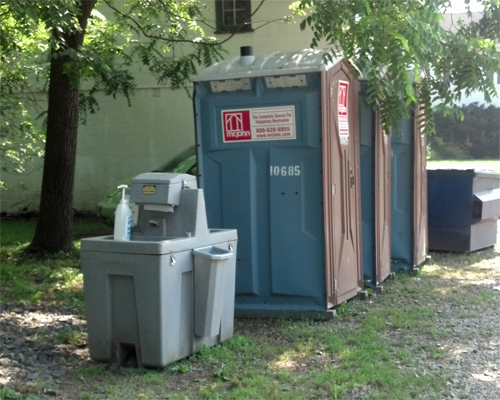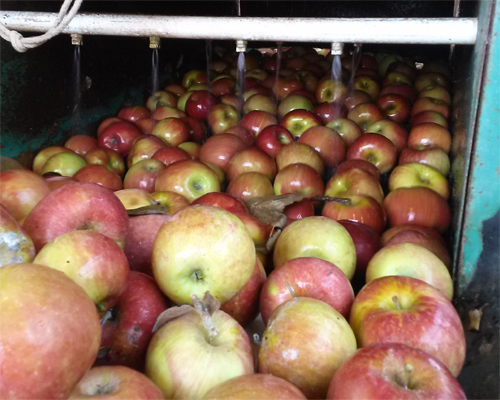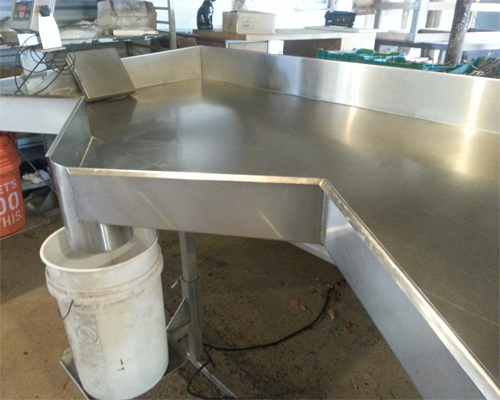
Fact Sheet FS1261
Food safety begins on the farm. It is every farmer's responsibility to ensure that the fruits and vegetables they produce are grown, packed, and shipped in a safe manner. Growers producing raw agricultural commodities need to consider risks involved with their production practices and do what is prudent to prevent contamination of their product. Understanding required regulations and Good Agricultural Practices (GAPs) is important for all growers, and for the health of New Jersey agriculture. This fact sheet will provide information specific to the production of produce typically consumed raw for both the Food Safety Modernization Act Produce Safety Rule and third-party audits. The Produce Safety Rule and third-party audits are both based on GAPs.
The Food Safety Modernization Act - Produce Safety Rule (FSMA)
FSMA was signed into law in 2011 and is the largest piece of legislation with an impact on the United States food supply since the creation of the Food and Drug Administration. Between 2011 and 2015, FSMA was drafted, released twice for public comment, and finalized. FSMA contains seven foundational rules, one of which is the Produce Safety Rule. The Produce Safety Rule portion of the Act seeks to prevent human pathogen contamination in produce typically consumed raw and is the section most directly affecting produce growers. The final FSMA Produce Safety Rule is available online, along with the other FSMA rules. The FSMA Produce Safety Rule sets standards for: agricultural water; biological soil amendments; domestic and wild animals; worker health and hygiene; equipment, tools and buildings; and sprouts.
The timeline required for achieving compliance with the rule varies by the size of the operation, and some farms will be exempt from the rule. Table 1 identifies compliance and exemption based on annual sales values and types of sales. The largest operations will be required to comply with the regulation starting in January 2018. Farms seeking exemption from the rule will need to have financial documentation proving they are exempt. The FDA expects producers to show this documentation for the previous three years, starting in 2016. Farm documents and receipts would be proof of exemption or need for compliance with this rule. Exempt farms do not need to comply with the specifics of the regulations, but should be aware of the regulations, have the ability to prove they are exempt and must comply with any labeling requirements.
| Who is required to comply with the FSMA produce rule? |
|---|
|
| What does the FSMA produce rule compliance look like? |
|
FSMA requires producers selling produce typically consumed raw through direct market channels to have adequate signage at their sales location. The signage should identify the farm name and location. Any packaged items should have labels containing the farm name and location.
Farms growing produce typically consumed raw will be impacted by FSMA to varying degrees. The FDA has developed a flowchart (PDF) so fresh produce growers can better understand how FSMA is going to impact them.
FSMA Definitions
Covered produce: produce identified by the FDA as typically consumed raw and therefore subject to the regulations of this rule (available in list form on the FDA FSMA Produce Rule webpage at www.fda.gov/Food/GuidanceRegulation/FSMA) .
Primary production farm: an operation under one management in one general location that is devoted to the growing of crops, the harvesting of crops, the raising of animals or any combination of the above. Limited processing is permitted including ripening, some drying (e.g., grapes dried into raisins), and packaging and labeling (e.g., placing berries into a clam shell).
Secondary activities farm: an operation not located on the primary farm(s) and owned with a majority interest by the primary farm(s). Off-farm packinghouses that do not meet the secondary farm definition are subject the FSMA Preventive Controls for Human Food rule.
Total food sales: food for human and animal consumption sold by the farm. For example: grain, hay, food produced off of the farm such as pies and other baked goods etc.
Qualified end user: food sales made direct to the consumer including sales through farm stands, Community Supported Agriculture (CSA), on-farm and directly to a grocery store or restaurant.
Third-Party Audit
Third-party audits are an on-farm food safety review and certifications of compliance typically requested by a buyer of produce such as a grocery store, a repacker, or a fresh cut processor. Third-party audits are often required by a buyer of wholesale produce prior to sale. Audit standards are designed to identify and reduce risk of human pathogen transmission by field production and postharvest activities. These audits began in New Jersey in 1999 as a collaboration between the New Jersey Department of Agriculture, Rutgers Cooperative Extension, and the U.S. Department of Agriculture (USDA).
The most common third-party audit conducted in New Jersey is by the NJ Department of Agriculture, although there are a number of other auditing firms operating in the state and country. In New Jersey, the USDA audits are conducted by the New Jersey Department of Agriculture Quality Grading Program. Participant farms are audited according to USDA-set standards during the harvesting of a crop. Other audit firms have their own standards, many of which can be found online. Your produce buyer will inform you which audit they require before the sale is made.
In order for an audit to be performed, the farm must have a written farm food safety plan in place. The farm's designated food safety point person must have proof of attendance at a USDA-approved training workshop. These workshops are offed by the Rutgers On-Farm Food Safety Team annually throughout the state. The required farm food safety plan is written to the USDA standards, and includes required policies, standard operating procedures, and documentation that are specific to the individual farm's operations. For example, each farm must have a written policy on the type of annual food safety training they provide for their workers. This policy can be just a few sentences long and will indicate who provided the training to the workers and what training materials were used. Documentation must show when that training took place, how it was conducted, and who attended.
The audit should be scheduled by the farm food safety point person. The farm will pay an hourly fee plus travel costs of the auditor, which will be billed after the audit. During the audit the farm food safety point person will review the written plan with the auditor, and a "walking audit" of practices will take place. The auditor will be looking to verify that the written food safety plan matches the production and post-harvest practices taking place at the farm. The successfully completed audit certificate is valid for one year.
| Who is required to comply with a third- party audit? |
|---|
|
| What does third-party audit implementation look like? |
|
Conclusion
All growers, whether required or not to comply with current food safety regulations and audits, should be trained to understand the potential for human and animal pathogen contaminations, and how to reduce those risks. GAPs training workshops are offered annually by the Rutgers On-Farm Food Safety Team. Growers are encouraged to attend Rutgers NJAES Cooperative Extension's food safety programming to better understand risk reduction practices and the varying levels of farm food safety regulatory compliance. Information on these trainings can be found on the Rutgers Plant and Pest Advisory webpage.
Resources
November 2017
Copyright © 2025 Rutgers, The State University of New Jersey. All rights reserved.
For more information: njaes.rutgers.edu.
Cooperating Agencies: Rutgers, The State University of New Jersey, U.S. Department of Agriculture, and Boards of County Commissioners. Rutgers Cooperative Extension, a unit of the Rutgers New Jersey Agricultural Experiment Station, is an equal opportunity program provider and employer.



